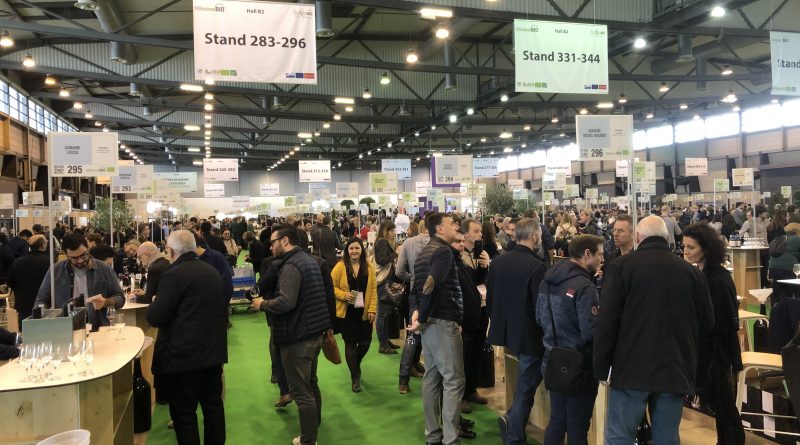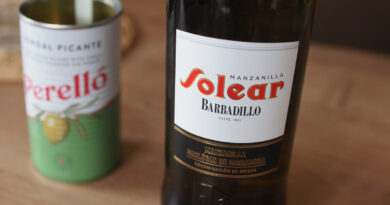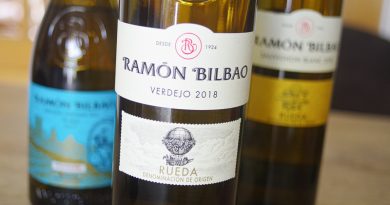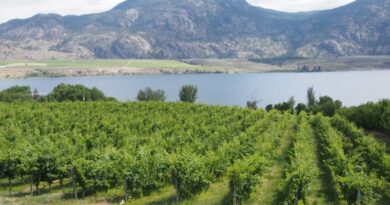Highlights from Millésime Bio & around Montpellier
As Goode tidily wrote up, 2020 saw the 27th edition of Millésime Bio, the world’s largest organic wine fair. We crossed paths in Montpellier for the show, him en route from Montevideo, Uruguay, and I coming via Toronto. It was our first time at the fair, and we’re both already looking forward to the 28th edition next January. Beyond the high quality and quantity of engaged organic producers (1300) from around the world, the layout of the show, at the spacious and natural-light laden Monpellier Exhibition Centre, made tasting a pleasure. Unlike some busier trade shows, there was little to no elbow jockeying at the tables. Catering options were plentiful and varied (including a très French pre-ordered three-course sit down menu), signage was clear and obvious, and the numerous freestanding spittoons in the aisles always a welcome sight.
As like attracts like, there were numerous off-shows happening in Monpellier around Millésime Bio, and I managed to hit two of those, as well as the main event. It’s a fantastic use of attendees’ time and energy, and well worth padding out MB by a few days to take in the smaller, niche shows.
Below are Goode and my individual highlights from our Millésime Bio adventures, as well as my recap of a couple off the off shows.
Goode’s Picks
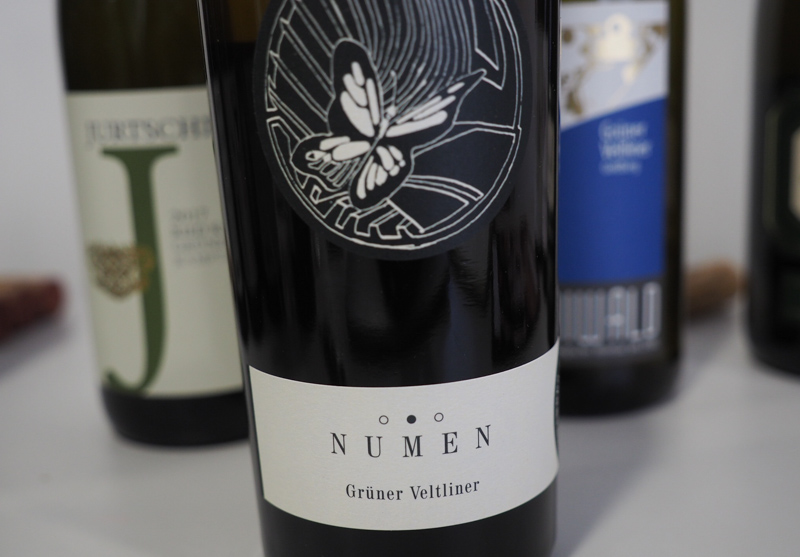
Johannes Zillinger Numen Grüner Veltliner 2017 Österreich
12.5% alcohol. This is a really interesting take on Grüner Veltliner from the Wienvertel. Old vines, biodynamic farming. It is partial carbonic maceration (25% whole bunch) in amphora, and then it is pressed to used 700 litre acacia barrels for 16 months. Full yellow colour. Lovely detail here: lemons and tangerines with some green apple and white pepper, showing a bit of structure with fine spiciness. Fresh and stony and a bit salty. Very mineral with lovely purity. Profound. 95/100
Champagne Pascal Doquet Horizon Blanc de Blancs NV France
32% is 2016 base with 2012, 13, 14 and 15 as a solera reserve wine making up the remaining 68%. This is complex and quite dense, showing some toast, wax and nuts on the nose. The palate is nicely savoury with some fruit sweetness and fine toastiness. Has harmony and length. 94/100
Hajszan Neumann Muskateller Natural 2018 Wien, Austria
Five months on skins in a mix of amphora and concrete egg. Aromatic with spice, citrus and pear notes. The palate is linear with good structure and nice acidity. Bright and focused with a peppery spicy finish. 94/100
Staffelter Hof Kröv Steffensberg Riesling Auslese 2005 Mosel, Germany
Powerful and intense with melon, mandarin and some marmalade. Pure, fine, sweet and intense with lovely texture and broad fruit. Such precision here despite the sweetness. 95/100
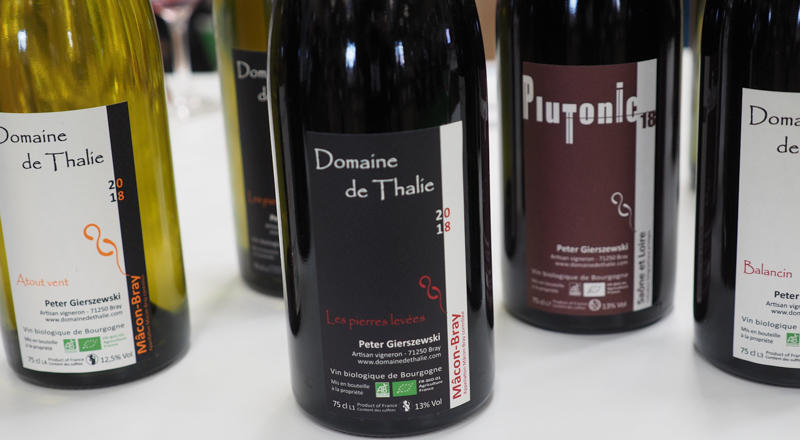
Domaine de Thalie ‘Les Pierres Levées’ Rouge 2018 Mâcon-Bray, Bourgogne
This is from 60 year old Gamay vines planted on Marne soils. It’s 100% whole bunch and is matured in 500 litre barrels. Nice purity and intensity with real finesse, and lovely cherry and raspberry fruit. Great precision and focus with a nice acid line, showing freshness and purity. 93/100
Ring’s Picks *focus on Champagne and Austria
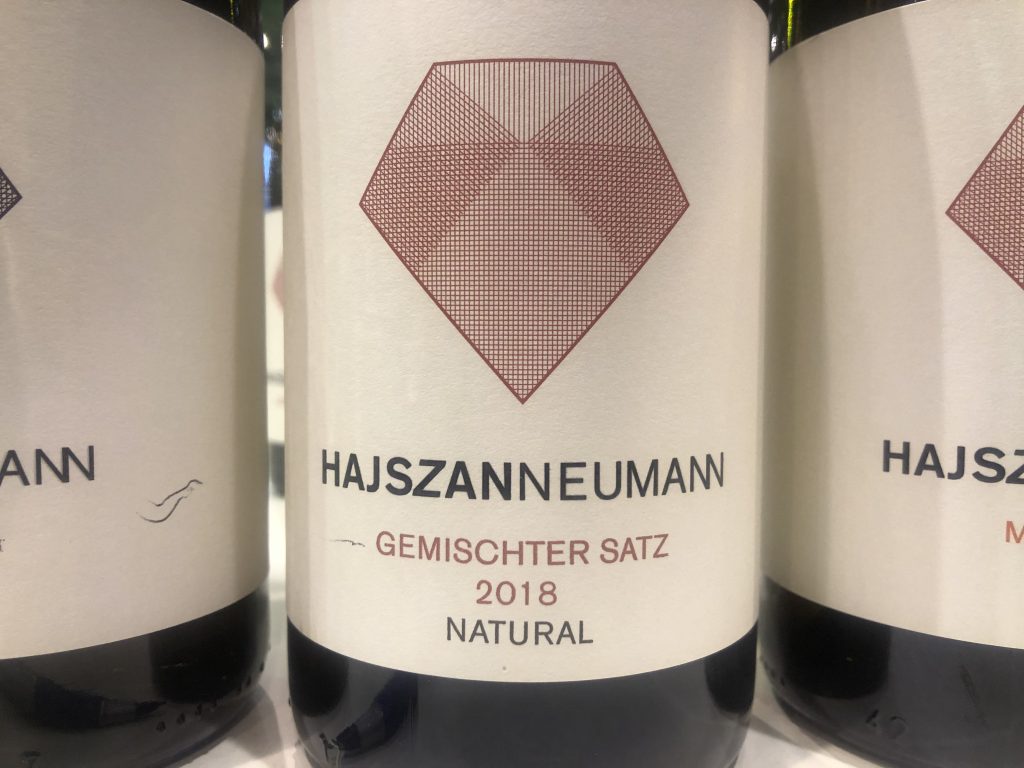
Hajszan-Neumann Gemischter Satz Natural 2018, Österreich, Austria
These grapes come from two old vineyards on the Wiener Nußberg: Ried Weissleiten, and Ried Ulm. The soil of both is comprised of limestone and clay, with a very high chalk component throughout. The mix of white grapes as native fermented on skins in concrete eggs with no sulphur or other additions. Post-ferment, it remains in the eggs for more than 5 months, after which it is racked off into neutral 500L barrels where it rested for 6 weeks before bottling unfined and unfiltered. Concentrated and heady, this wine astounds with flavours and energy: quince, medicinal white cherry, coriander seed, dried ginger, lime pith, bergamot, dried white florals… There’s ample fine grippy tannins and tension here, holding this long wine taut until the finish. Complexed and intriguing; I’d love to open this and have over a few hours (or days) to watch the evolution. 92/100 (TR)
Rivetto Barolo Serralunga d’Alba 2018, Piemonte, Italy
Enrico Rivetto farms his family’s estate with a philosophy beyond biodynamics, and towards complete biodiversity. From three vineyards in Serra, Manocino, and San Bernardo, all in the eastern corner of Barolo, and at 340-420m, this nebbiolo was destemmed and deseeded before native fermentation and 25 days maceration. The deseeding technique is one devised by Enrico to remove the bitter pips from the wine, providing a silkier, smoother wine. Dried tea, dried roses, stones and waves of salt flow through this long, structural Barolo. Tannins are fine but firm, a little sticky now in youth, but well stretch beautifully with time to house the maturing fruit. Intensity and finesse. 93/100 (TR)
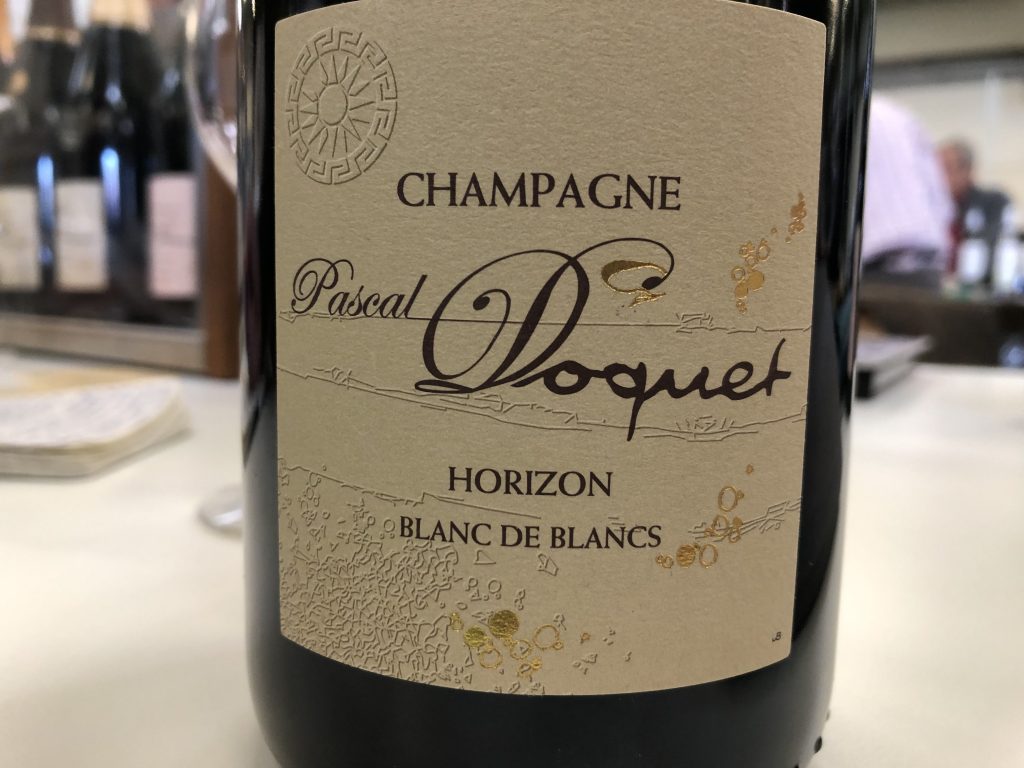
Pascal Doquet Horizon Blanc de Blancs NV, Champagne, France
Pascal Doquet has been a winemaker in Vertus since 1982, and has overseen Champagnes Doquet since 2004 with his wife Laure. Their 10 ha are farmed organically and have been certified since 2007, and they also operate as a negoc, bringing in 2/3 of their fruit needs from local growers. Horizon is a blanc de blancs of 50-year-old vines from deep chalky soils, and was native fermented in stainless for 11 months before 3 years on lees. This bottle was 1/3 2016, with the remainder reserve wines from a solera dating back to 2011. It was disgorged July 2019. Deep dough, lemon, and toast is etched with fine tannins and bound by a firm structure. The reserve wines certainly provide a presence and completeness, while the tight acidity and skinny finish keeps this lively and fresh. Very precise, considering the proportion of reserve wines. 92/100 (TR)
Jean Féry + Fils Savigny-Les-Beaune Ex Connardises 2018, Bourgogne, France
The Domaine Jean Féry & Fils is a family estate now in its 4th generation, and certified organic since 2011. They farm biodynamically, but are not certified. They own 14 ha of vineyards across 22 appellations, and are based in the Hautes Cotes village of Echevronne. After a whole cluster press, the must is cold settled for 24 hours before going to barrel (50% new) for native ferment and MLF, with regular battonage. This is flicked with flint, and lofted with an easy, natural acidity characteristic of Savigny-Les-Beaune. A fine wash of salts lures on the lingering finish. 93/100 (TR)
Vincent Gaudry La Constellation de Scorpion 2019, Sancerre, France
This family owned winery is based in the hamlet of Le Petit Chambre, in Sury en Vaux in Sancerre. The Domaine has passed from father to son for several generations, with Vincent now in control, and the one who has completed the transfer to full biodynamic farming and Demeter certification. They have 8 hectares planted to 90% Sauvignon Blanc and 10% Pinot Noir. No inputs or outtakes are used, and the wines are unfiltered and bottled by the lunar calendar. The Scorpion is a single old vine parcel of massale selection Sauvignon Blanc, planted on pure silex. Scorpions are sharp, like the soils. The wine was native fermented and aged in barrel, where it aged for one year prior to bottling. Intense in minerality, this powerful wine rings with flint, light smoke, green apple and giant flakes of mineral salts. The palate hums with vibrance and energy. Stunner. 94/100 (TR)
Francoise Bedel L’Ame de la Terre Extra Brut 2002, Champagne, France
Based in the Marne, this grower is in the first village you will come across as you drive in from Paris. Vincent Bedel, 3rdgeneration, is now in charge if this biodynamic estate, certified since 1998. This wine is a selection of the best lots, and changes year from year. In 2002, it was 42% Pinot Noir, 36% Chardonnay, and 22% Pinot Meunier, with 14 years on lees, disgorged June 2018. Light caramelized notes, grilled pineapple, and patisserie, with scents of marzipan on the finish. The acidity is still very much present and able to carry the depth of age. In lovely balance right now, impressively so. 92/100 (TR)
*In addition, I’ve already written up highlights from Millesime Bio tastings at Heinrich, Champagne Leclerc Briant, and Champagne Larmandier-Bernier.
The Off Shows
As with any major wine show, there are always off-site, independently operated tastings, colloquially known as Off Shows. These have nothing to do with the main shows, but just smartingly taking advantage of a huge crowd of like-minded wine folks. I took in two off shows the day before Millesime Bio began.
Le Vin des Mes Amis
Established in 2004 by Charlotte Sénat as a way to bring together like-minded, terroir-driven winegrower friends. The group is mostly French, but also includes growers from Portugal, California, Spain, and Italy.
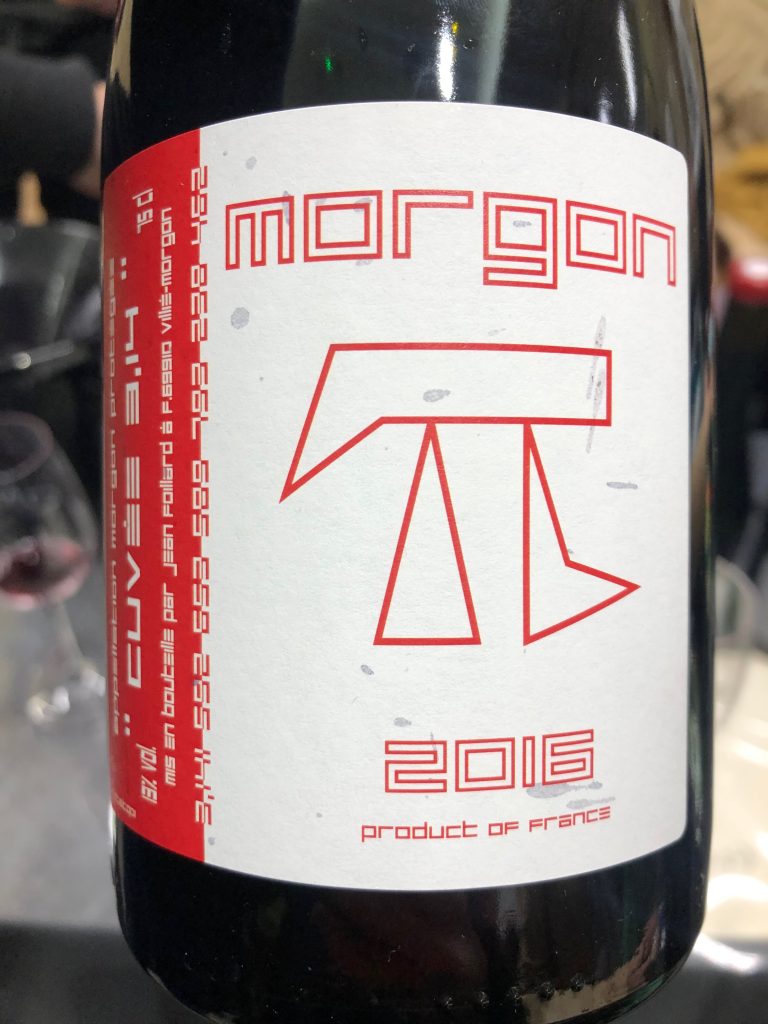
Foillard 3.14 2016, Beaujolais, France
Jean and Agnès Foillard took over his father’s domaine in 1980, with most of their vineyards are planted on the granite and schist soils of Côte du Py. Jean’s influence on Bojo’s biodynamism is impossible to undervalue. Along with three other local vignerons, Marcel Lapierre, Jean-Paul Thévenet, and Guy Breton, he began to farm the vineyards in a low-interventionist, biodynamic way. They are the original Gang of Four. This natural cuvee, marked by the pi symbol, comes from their oldest vines in Côte du Py, averaging 100 years. This was native fermented, whole cluster for 3-4 weeks, and then gently pressed into old Burgundian barrels for a 9 month rest. Very pale in hue, and forward in attack, with wild strawberries, raspberries, tart spring rhubarb. Tannins are whisper fine, and the delicate, yet present fruit is woven with fine summer spices and mineral salts. This nails the delicacy / intensity balance in a highly memorable way. Beauty. 93/100 (TR)
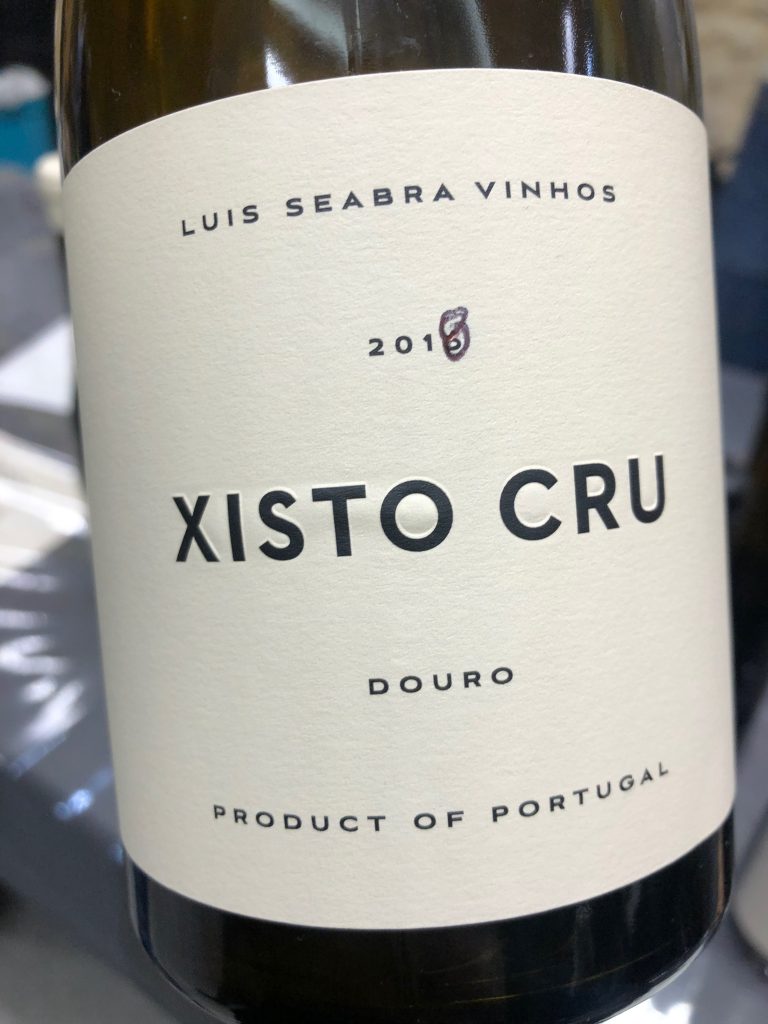
Luis Seabra Xisto Cru White 2018, Douro Valley, Portugal
Luis Seabra is highly respected in Portuguese winemaking, having made the wines at Niepoort for a decade before leaving to make his own name with Douro wines. From sustainably farmed Douro Superiore vineyards planted from 1920-1933 on mica schists at 650-700m, this is a blend of 70 percent Rabigato, balanced out with Codega, Gouveio, Viosinho, and Dozelino Branco. According to Seabra, Rabigato is a fairly neutral grape, so is a natural terroir-transmitter. There is no MLF or battonage to blue the story here. Minerality rings from the start, with flinty broken stones, a touch of light smoked stone, meadow herbs, subtle dried quince, light anise and a pad of earthy lees to a flake salt and flint finish. Fantastic structure, finesse, and nonchalance, this is a joy to drink now and in future. Fantastic vintage. 93/100 (TR)
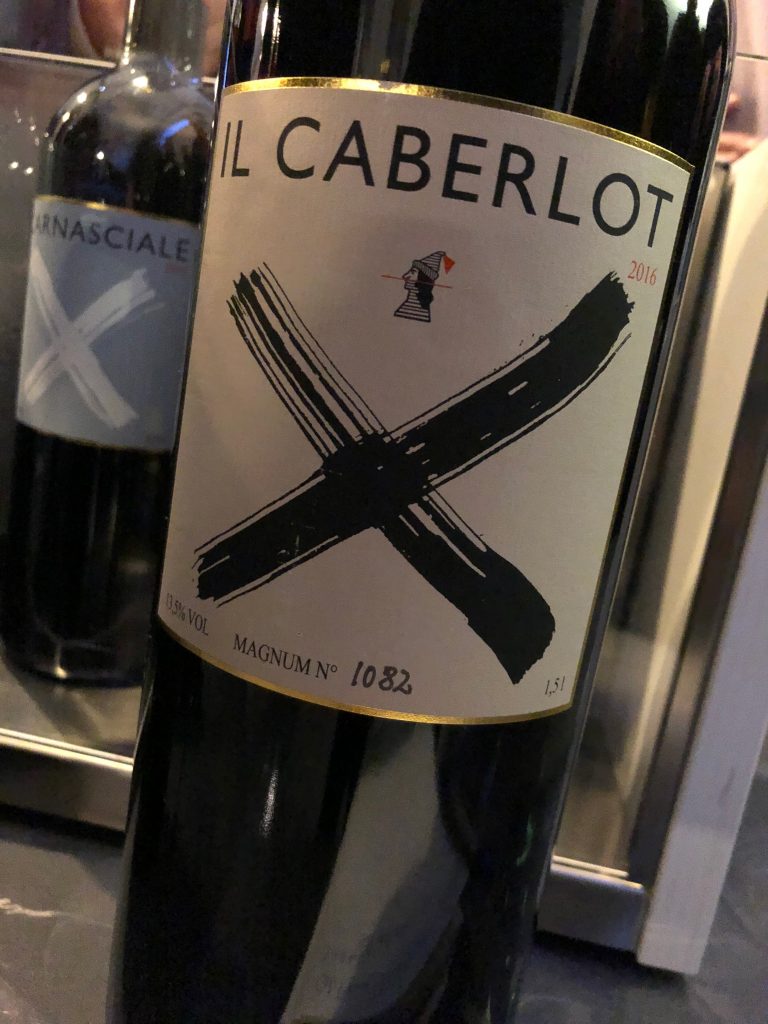
Carnasciale Il Caberlot 2016, Tuscany, Italy
One of the rarest wines in Tuscany, the secluded hilltop estate of Podere Il Carnasciale, in the mountains of southern Chianti’s Valdarno region, is the only vineyard to cultivate Caberlot. The grape is a genetic mutation of cabernet franc, with distinct characteristics of merlot. It was discovered in Veneto by Remigo Bordini, and planted in conjunction with Bettina and Wolf Rogosky at the Tuscan estate in 1986, with the aim of producing something entirely different from the Chianti of the time. This low intervention, organic-focused red certainly is unique. Streams of ink, dark plum, graphite, wild raspberry and wild blueberry, is layered with worn leather, thorns and darks of anise. This is incredibly long and well knit on the mouth, finally finishing with a natural cola and mineral salts. Graceful and elegant, this is serious quality, and seriously ageworthy, especially in the magnum-only format (2100 mags only). 95/100 (TR)
Biotop
Biotop 2020 took over the old, rambling and rustic Grands Chais de Mauguio for two days, welcoming 65 organic, biodynamic and natural winemakers. Because my time was limited to a half day, I focused on the room featuring the Vignerons de Nature, an association of 30 winegrowers from France, and one from Italy.
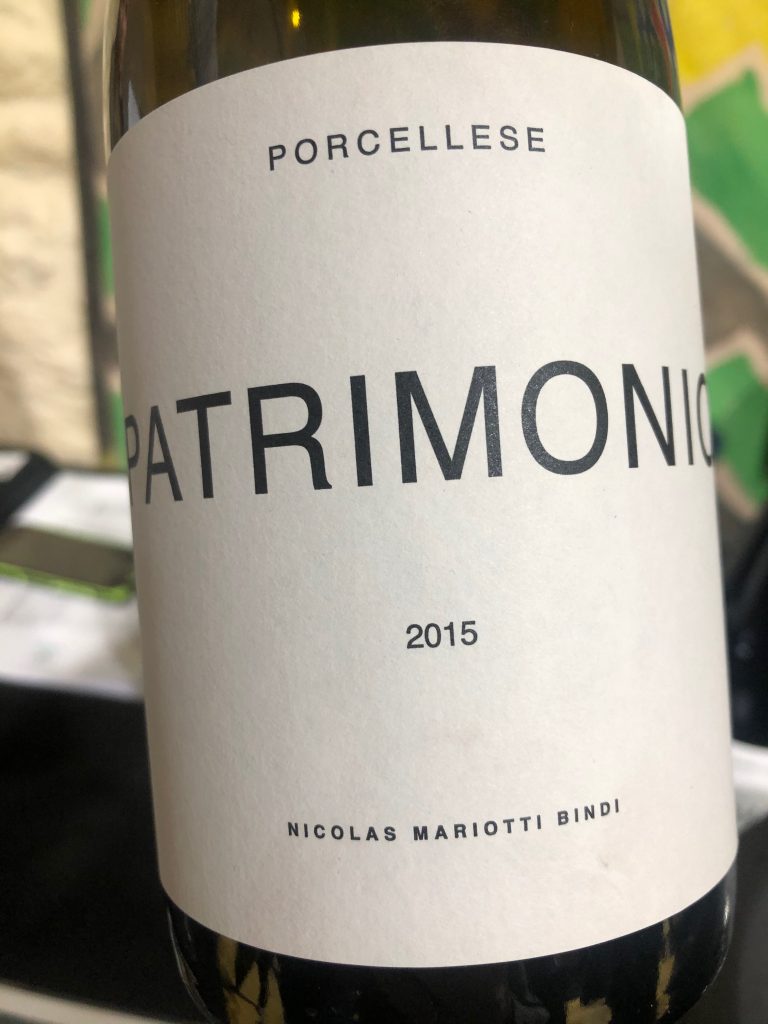
Nicolas Bindi Rouge Porcellese Vieilles Vignes, Patrimonio, Corsica, France 2015
From his Corsican Cantine de Torra, across the sea from Italy’s Cinque Terre, Nicolas Bindi has made a name for himself and his expressive, biodynamic wines made from massale selections of Nieillucciu (Sangiovese) and Vermentinu (Vermentino). He works four distinct terroirs and soils on the island, including the limestone clay slopes of his own property, Cantine de Torra. Porcellese was one of the first vineyards Nicolas acquired, 3.5 hectares of gobelet-trained Niellucciu vines that were planted in 1966 in alluvial soils with round stones. These vines are destemmed into concrete tank for a 48 hour cold soak and native ferment, sans extraction. The wine rests at least 24 months in concrete prior to bottling without fining or filtration. Wild, sapid plum, scrubby herbs, peppercorns, and earth and bound with leathery, grippy tannins, holding the medium-bodied, lighter hued wine. Authentic and raw, handled gently, and with finesse. Impressive. 91/100 (TR)
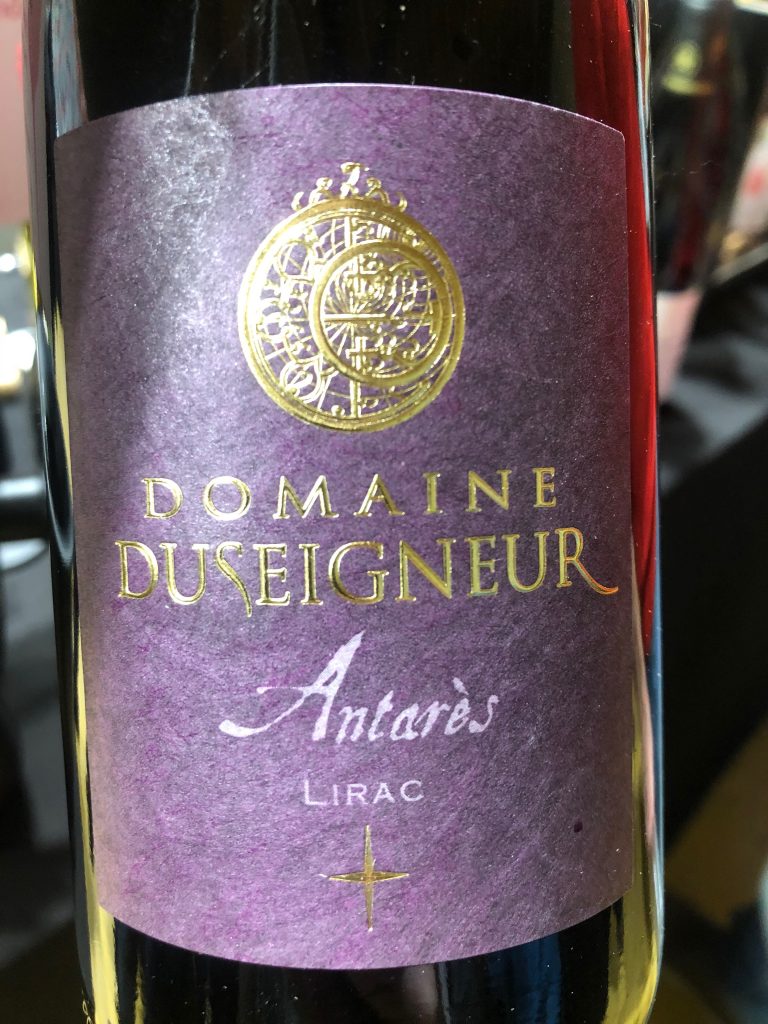
Domaine Duseignéur Antarès 2015 Lirac, France
Lirac, to me, always has this striking, almost haunting purple / blue florality: wild blueberries, violets, cassis, and thorns, and this striking biodynamic Grenache / Mourvedre is a textbook case. That said, this is far lighter, fresher, and more elegant than many Lirac, with a loftly acidity and white pepper seasoning that lingers on the finish. These vines face north, planted around 160m on sandstone and deep sand. After the grapes are destemmed, the grenache goes into cement and the Mourvedre in older French demi-muids for a year. 92/100 (TR)
Other shows in and around Montpellier at this time:

